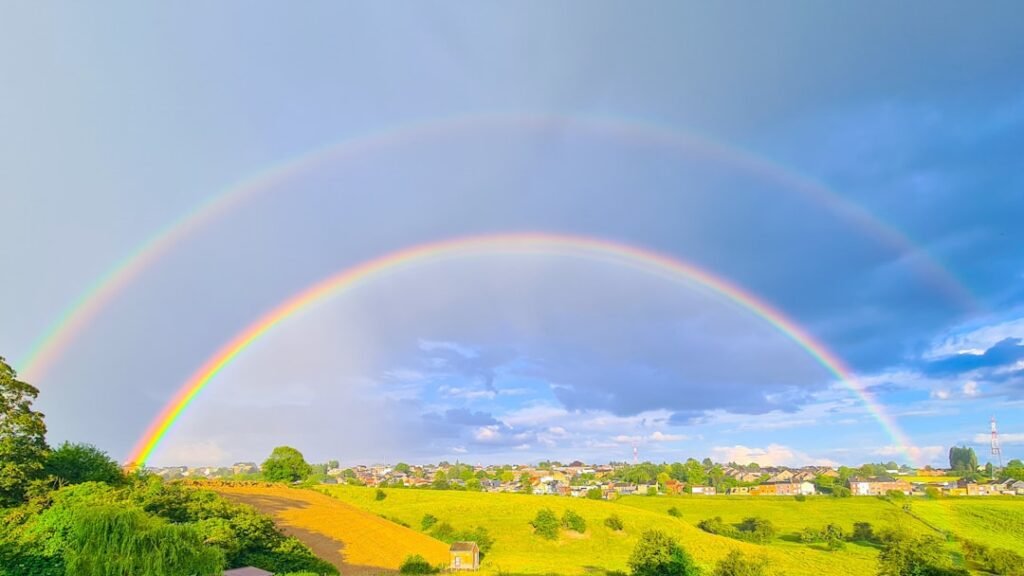You’ve probably gasped at the sight of a rainbow stretching across the sky after a storm, but have you ever been lucky enough to witness its even more spectacular cousin – the double rainbow? These breathtaking optical phenomena occur when nature orchestrates a perfect symphony of sunlight, water droplets, and atmospheric conditions.
The appearance of is truly “a cosmic interplay between solar radiation, optical physics, billions of water droplets, and the ability of the human brain to separate white light into the visible spectrum.” Today, we’ll unravel the fascinating science that creates these magnificent displays in our atmosphere.
The Physics of Light Refraction and Reflection
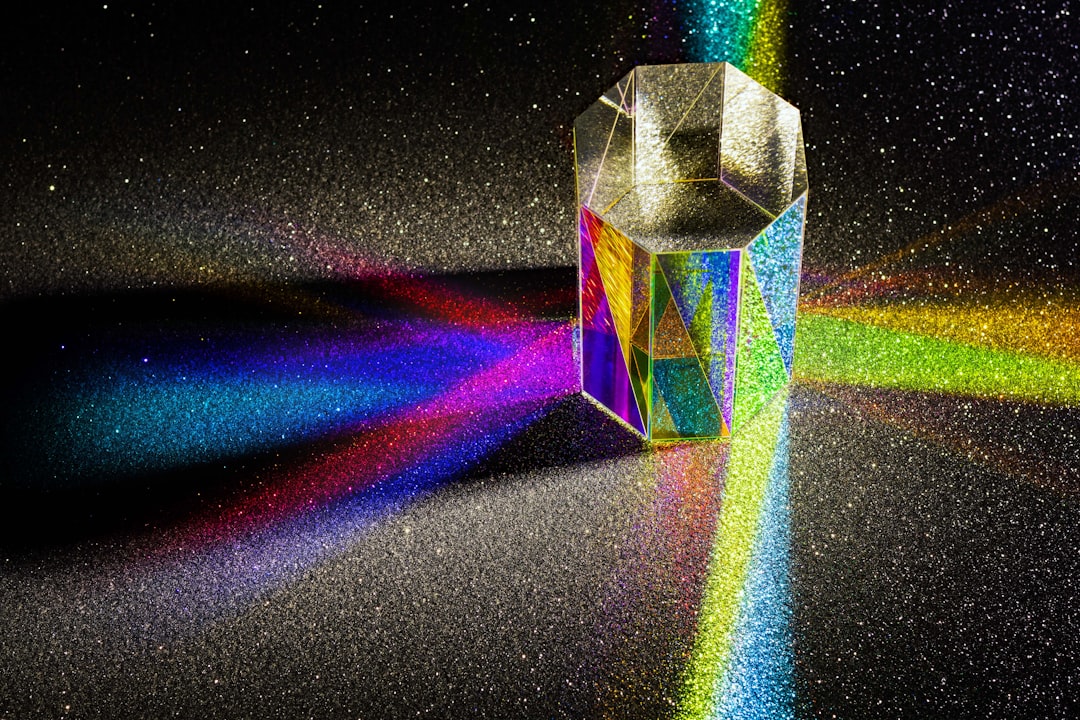
To understand double rainbows, you first need to grasp what happens when sunlight meets a single water droplet. The sunlight is refracted (bent) as it enters the water droplet, then internally reflected off the back surface, and finally refracted again as it exits the droplet. This process isn’t random – it follows precise optical laws that scientists have studied for centuries.
The index of refraction of water is slightly lower for the red end of the visible light spectrum compared to violet, so a violet ray will refract, or bend, a little more than a ray from the red end of the spectrum. This effect is known as dispersion. This dispersion is what separates white light into its rainbow of colors.
Primary Rainbow Formation at 42 Degrees
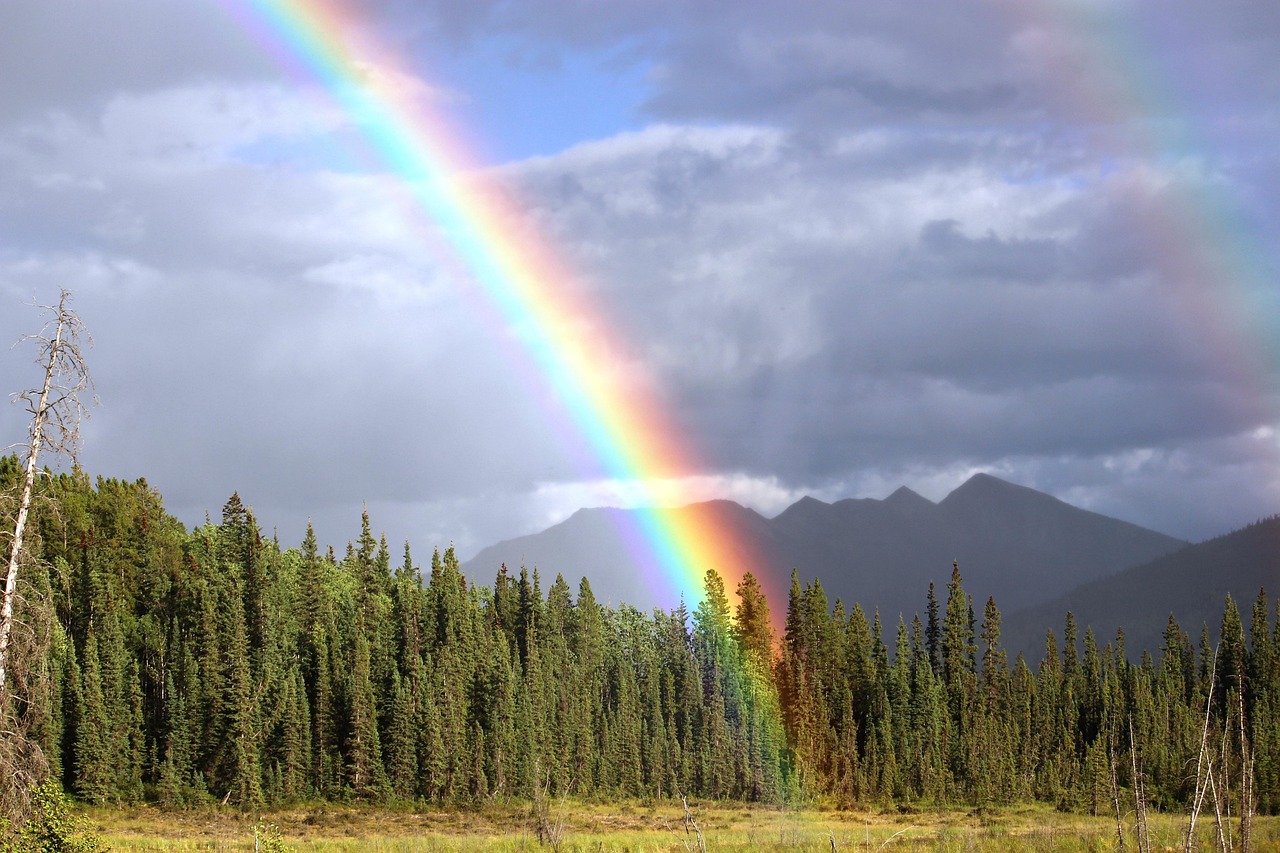
The rainbow angle is 42 degrees for the primary rainbow, determined by the physics of how light refracts and reflects inside a raindrop. The secondary rainbow has an angle of 51 degrees. These specific angles aren’t coincidental – they represent the points where light rays naturally converge after their journey through countless water droplets.
The sun needs to be at a low angle for rainbows to form. Usually, the sun needs to be 42 degrees above the horizon or less for optimal rainbow viewing. When conditions are perfect, you might witness something even more extraordinary than a single arc of colors.
The Secret Behind Double Reflections
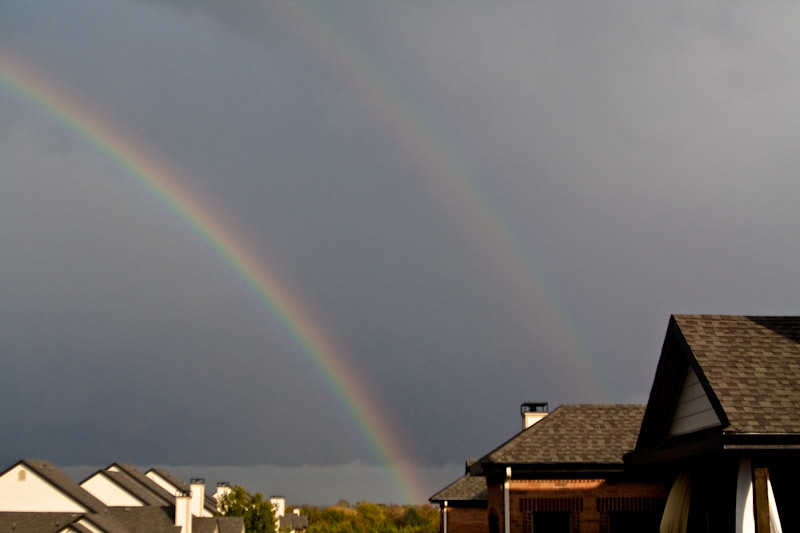
Here’s where things get truly fascinating. is formed when there are two reflections inside a raindrop. So instead of reflecting off the back once, it will actually reflect twice. This additional reflection creates a secondary rainbow that appears above the primary one.
In , a second reflection of light occurs within the water droplet. This additional reflection results in the formation of a secondary, fainter rainbow outside the primary one. Think of it as light taking a longer, more complex route through the droplet, losing some intensity along the way.
Why Colors Reverse in the Secondary Rainbow

The order of colors in the second rainbow is reversed due to the additional reflection, with red on the inside and violet on the outside. This reversal happens because that extra internal reflection flips the light’s path, creating a mirror image of the color sequence we see in the primary rainbow.
The secondary rainbow tends to be fainter than the first and it also displays the colors in the reverse order from the primary rainbow. This dimmer appearance occurs because light loses energy with each reflection and refraction it undergoes inside the water droplet.
Alexander’s Mysterious Dark Band
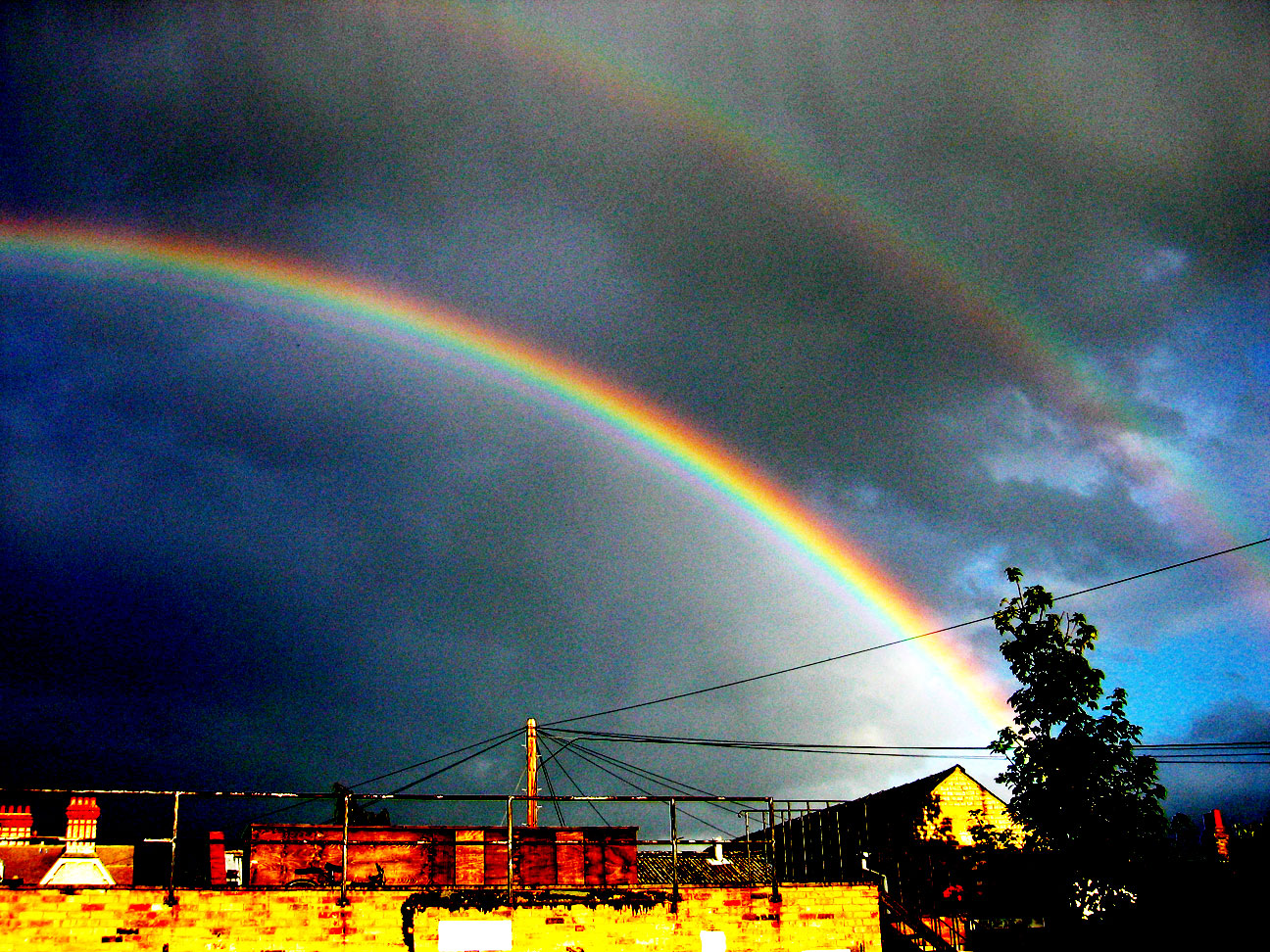
Between the two rainbows lies one of nature’s most subtle yet intriguing features. This peculiar optical effect is known as Alexander’s Dark Band, named after Alexander of Aphrodisias, who first described it in 200 AD. This ancient observer noticed something that modern science has now explained.
Raindrops along lines of sight between the two bows cannot send light to your eye and so the sky is darker there. This darkened strip of sky between the primary and secondary bows is due to the reflection (and refraction) of sunlight in raindrops – the dark band is deprived of this light. It’s essentially a shadow zone where the specific angles prevent any rainbow light from reaching your eyes.
The Rare Beauty of Supernumerary Rainbows
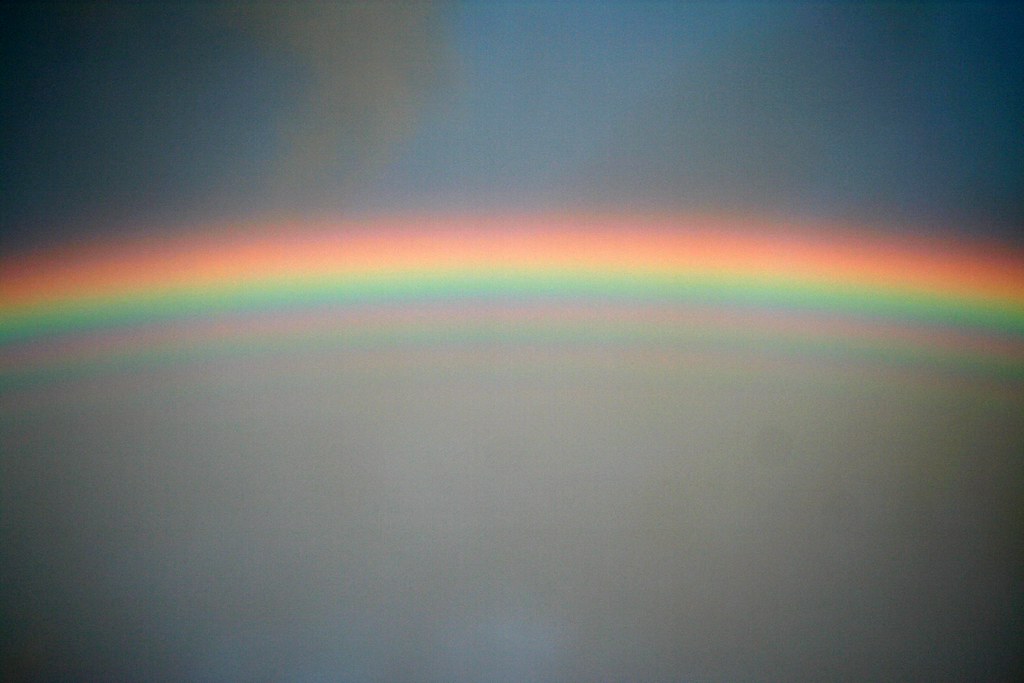
Sometimes, if you look closely at the inner edge of a primary rainbow, you might spot something extraordinary – faint bands of pastel colors that seem to float just inside the main arc. In certain circumstances, one or several narrow, faintly colored bands can be seen bordering the violet edge of a rainbow. These extra bands are called supernumerary rainbows or supernumerary bands.
The effect becomes apparent when water droplets are very small, typically much less than 1 mm in diameter; the smaller the droplets are, the broader the supernumerary bands become, and the less saturated their colors. Due to their origin in small droplets, supernumerary bands tend to be particularly prominent in fogbows. In supernumerary formation, reflected rays interact in ways called constructive and destructive interference. Light is either reinforced (constructive interference) or canceled out (destructive interference).
Perfect Conditions for Double Rainbow Sightings
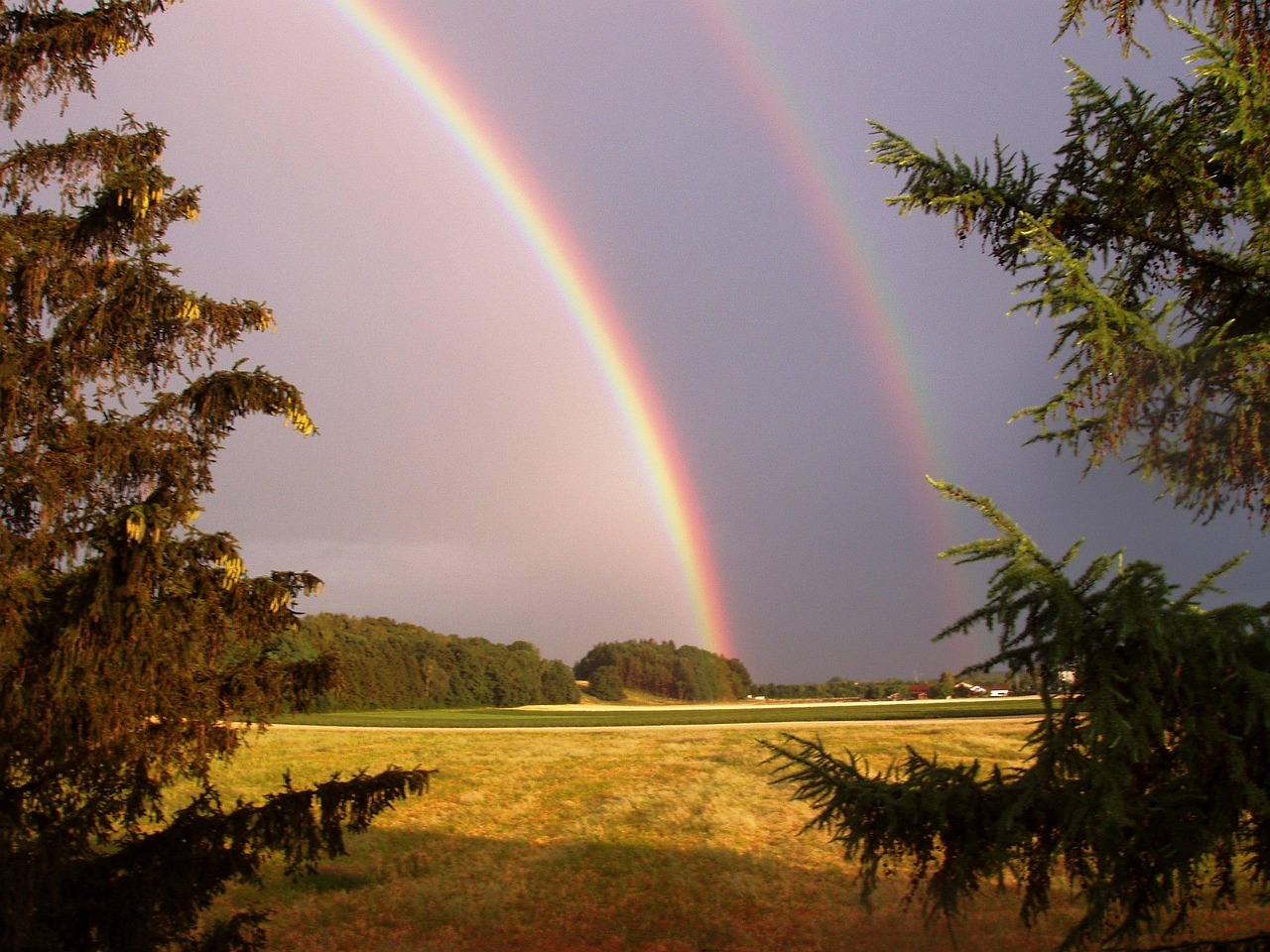
There must be sunlight and rain simultaneously present. The angle of the sun is crucial, with rainbows typically forming when the sun is low in the sky, such as during or shortly after a rain shower in the late afternoon or early morning. These conditions create the perfect stage for nature’s most spectacular light show.
is a rare event, caused by the unique alignment of sunlight, water droplets, and the observer’s perspective. You need to be in exactly the right place at the right time, with the sun behind you and rain clouds in front of you. The droplets must be the right size, and atmospheric conditions must cooperate perfectly.
Why Some Rainbows Are Brighter Than Others
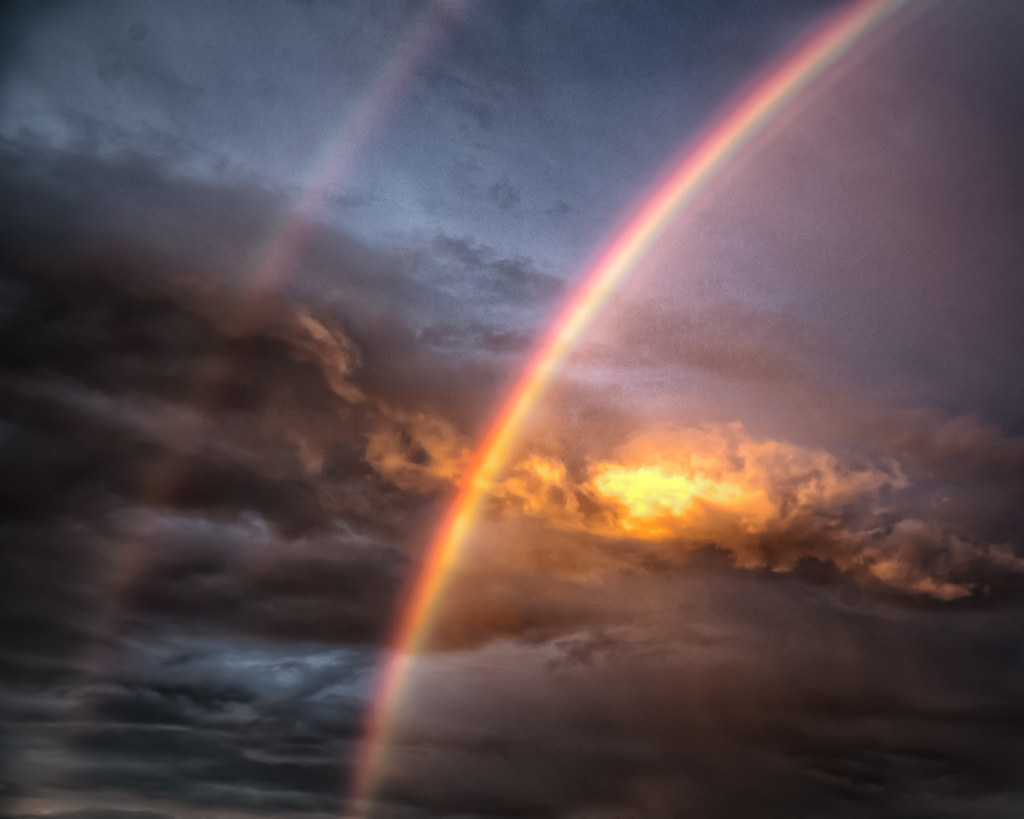
Brilliant colors are more likely to result when the raindrops are bigger. The size of water droplets plays a crucial role in determining not just the visibility of double rainbows, but also their intensity and color saturation. Larger droplets create more defined color separation, while smaller ones produce more subtle, pastel hues.
Some light is scattered, which is why double rainbows usually appear faint and less defined than regular rainbows. A third or fourth rainbow would be even fainter, so it would be even difficult to see with the naked eye. Each additional reflection reduces the light’s intensity, making higher-order rainbows increasingly rare and difficult to observe.
The science behind double rainbows reveals nature’s incredible precision in creating these fleeting masterpieces. From the exact angles of light refraction to the mysterious dark band that separates the twin arcs, every element follows the fundamental laws of physics. Next time you witness , you’ll appreciate not just its beauty, but the remarkable scientific symphony playing out in the sky above you.
What do you think about these fascinating optical phenomena? Have you ever been fortunate enough to spot yourself?

Hi, I’m Andrew, and I come from India. Experienced content specialist with a passion for writing. My forte includes health and wellness, Travel, Animals, and Nature. A nature nomad, I am obsessed with mountains and love high-altitude trekking. I have been on several Himalayan treks in India including the Everest Base Camp in Nepal, a profound experience.

